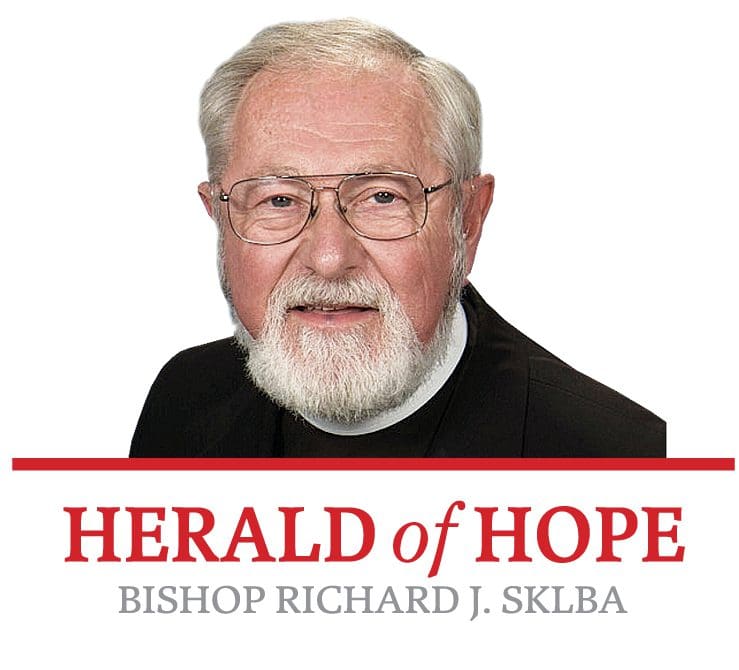Herald of Hope
By its very nature, and by more circumstances than we can count or measure, the Easter season is a wonderful time of grace and renewal. Perhaps the decision of Israel and then consequently the Church’s selection of the time of the year for the celebration of the Paschal Mystery is wholly Divine Providence. The exodus probably occurred in the springtime. The Lord died and rose in the springtime. Perhaps the choice of seasons, however, is also the result of human experience and hope. For people of faith, the human dimension is transfused by the divine ever at work. In this part of the world, and certainly also in the lands we call holy, or the “Near East” as titled in books of geography, these days coincide with renewed spring planting and the initial freshness of annual agricultural promises. Flocks were moved to fresher pasture lands.
For the people of Israel, whose hearts were always fashioned by their early days of working with the flocks and the fields, the season’s labor was wholly oriented toward the future. Spring was a time of investing in future harvests and, therefore, eventual human sustenance. Everything about this sacred season is oriented toward the future. Everything about this time of the year is filled with hope and future promise.
Almost every day, I take a walk along the Milwaukee River as it flows through my downtown neighborhood. Retirement brings the blessings of leisure and (for the most part) the freedom to create the substance of each day as it arrives. These days, the light extends bit by bit later into the evening. Backyard gardens are planted. The end of the school year invites early planning for summer activities. So much is welcomed with an eye toward the future.
Fifty days stretch from Easter to Pentecost. Our paschal liturgy eagerly looks forward to the annual celebration of the gift of the Holy Spirit at Pentecost. Throughout these 50 days of growth in new spiritual vitality, we deepen our roots into God’s grace, and lift up our spirits into the freshness of new life. Easter looks toward the future, as does the Feast of Pentecost. We live in openness to the inspiration of God’s Spirit.
Our western culture, social and secular, traditionally prepares us for new year’s resolutions on the first of January. Equally appropriate, however, would be Easter resolutions. At Easter, we celebrate the redemption of the world and the renewal of our lives. Although we may have been baptized as infants at a time closer to the actual date of our birth (and that ancient practice is related to the fragility of infant existence), the Easter liturgy invariably offers the opportunity for the entire Church, and all its individual members, to renew their baptismal promises. In a society that has long taken infant Baptism for granted, to make those promises (once made for us by parents and baptismal sponsors) now years later as mature adults, can give us the opportunity to understand them better and to embrace their implications for more adult decisions. As adults we understand what the promises entail — and what they may cost — but also the blessings they promise.
Perhaps we may have made the same resolutions the prior year, or even annually over time, but they remain goals and aspirations for a new rhythm of life rooted in God’s future as well as in past gifts of divine love and grace. Baptism into God’s future is both an event and process.
Easter is always a time for renewed beginnings. The Easter candle, blessed each Holy Saturday evening with so much solemnity, is poised as an enduring question, aflame and illuminating the darkest corners of our hearts: What resolutions have we made this year in order to enter more fully into the final age of the world’s divine redemption? What obstacles have we tried to allow God to remove?

